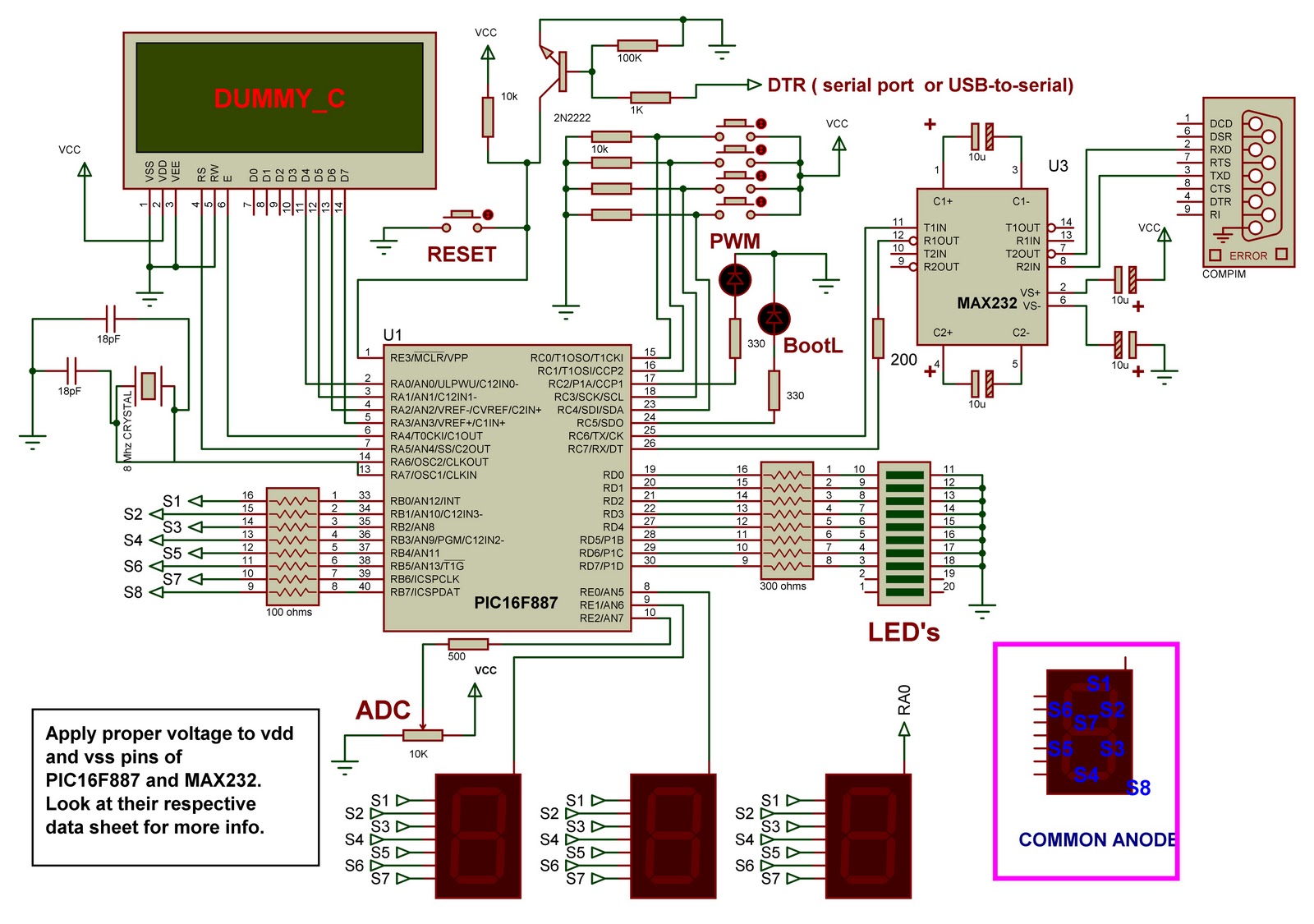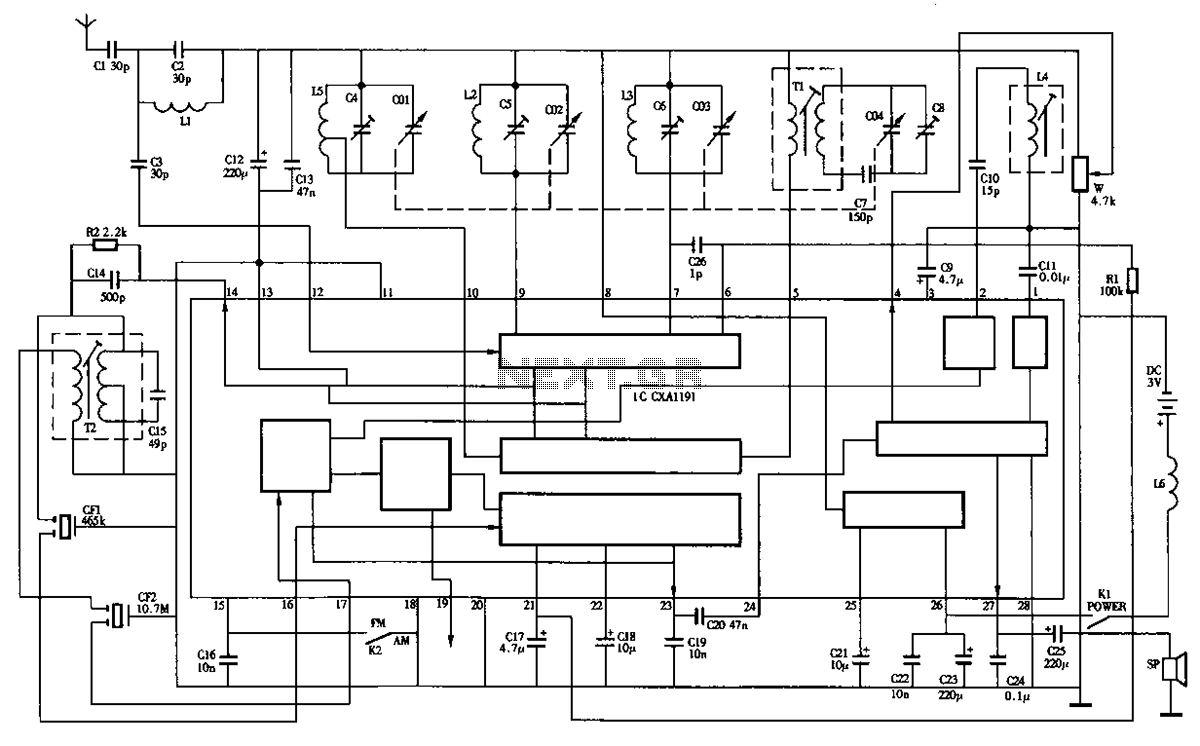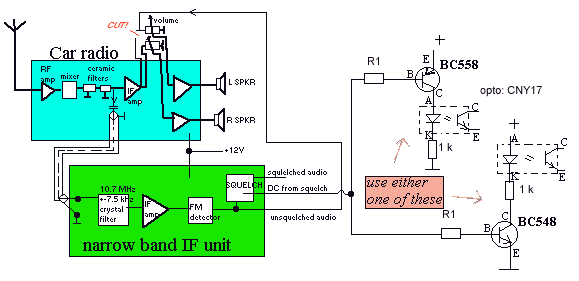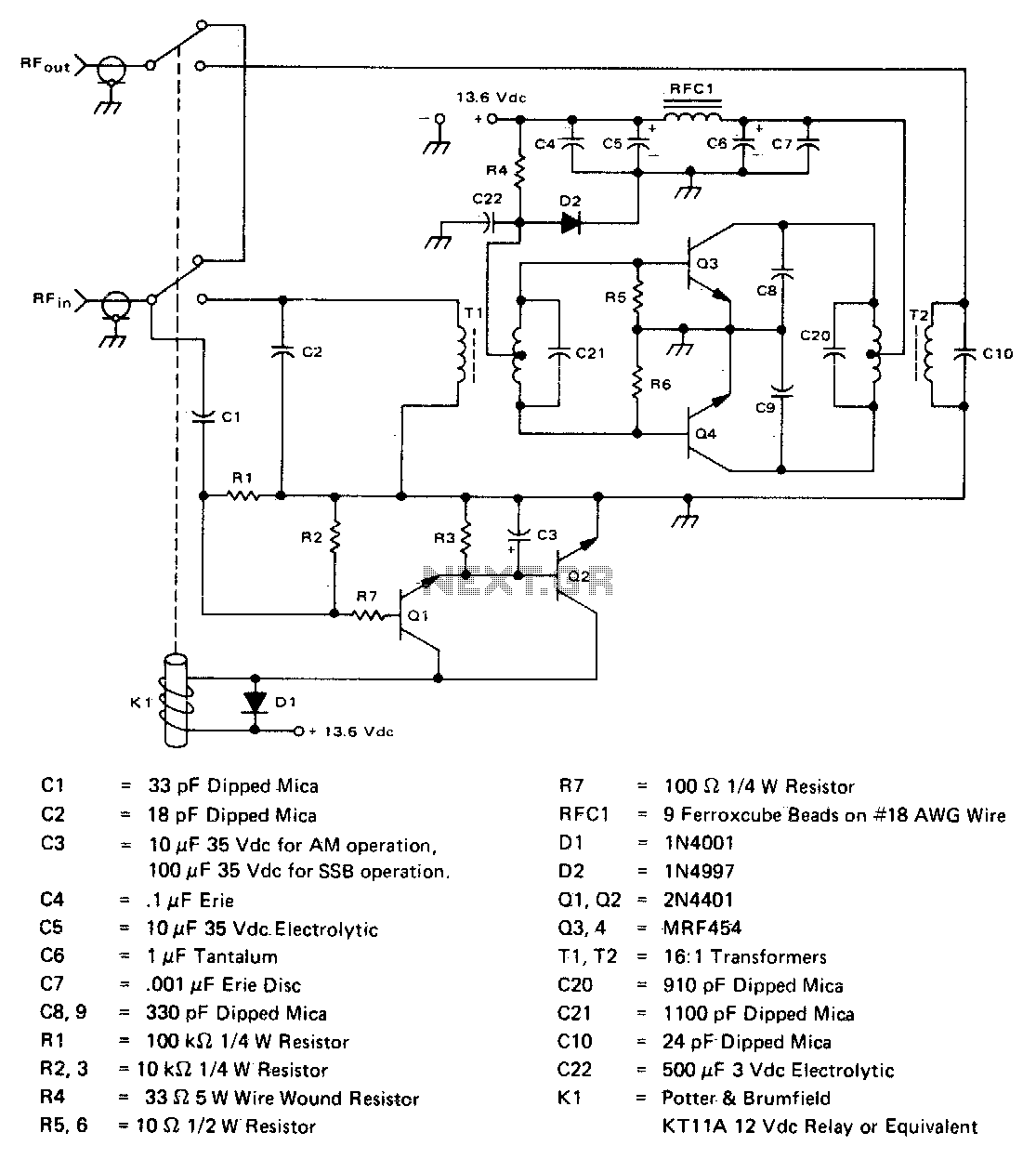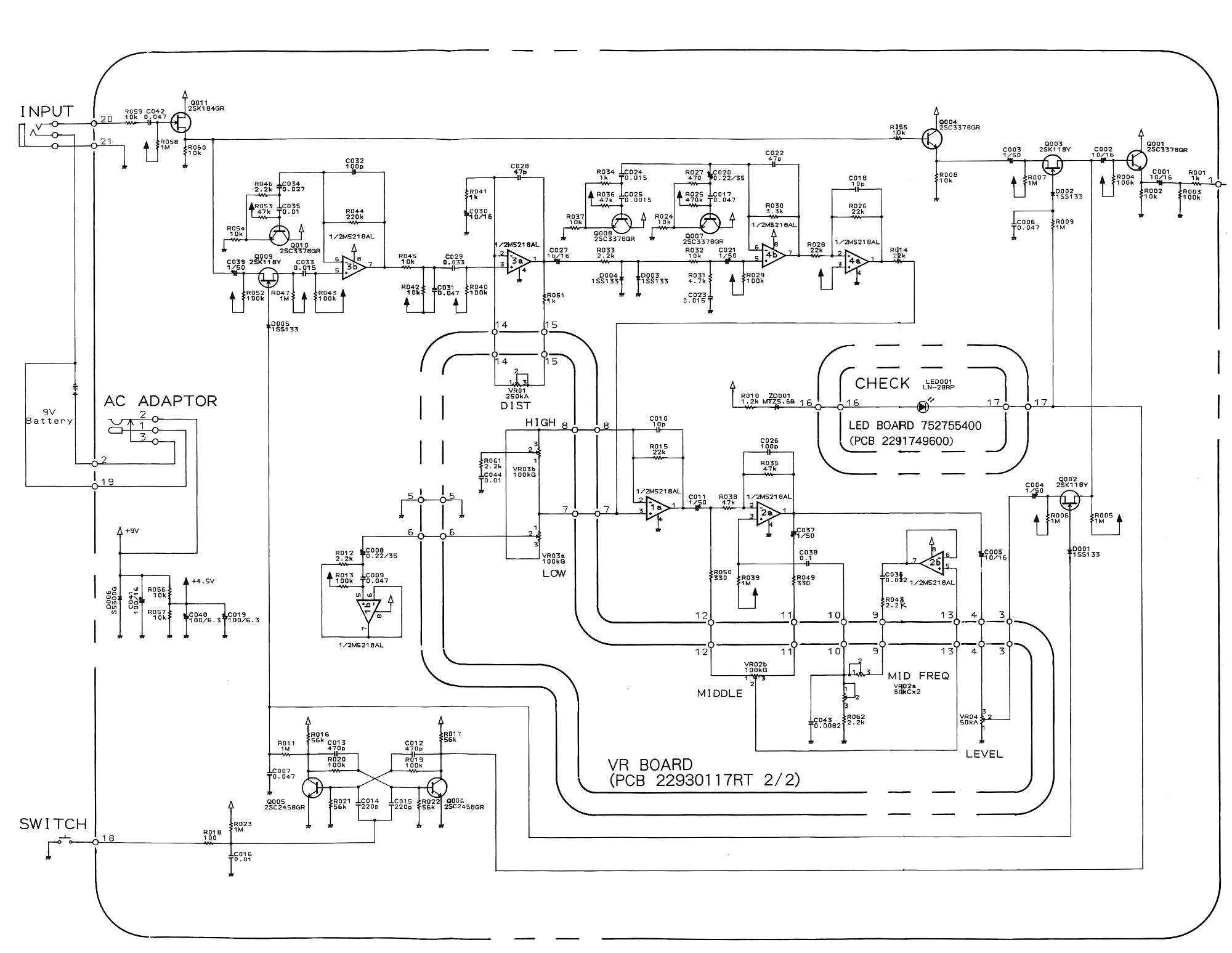
fm radio ic tda7000 schematic
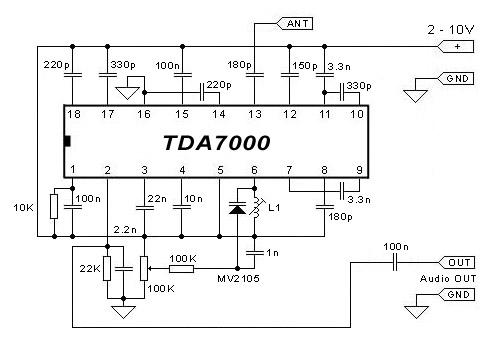
The FM radio receiver circuit is designed using the TDA7000 integrated circuit (IC). This circuit operates with a DC voltage range of 2 volts to 12 volts. The TDA7000 IC is specifically engineered for FM reception and employs a Frequency-Locked Loop (FLL) system at an intermediate frequency of 70 kHz. The complete schematic of the FM radio receiver utilizing the TDA7000 IC is illustrated in the accompanying figure. This circuit can receive radio frequency emissions from transmitters within the range of 70 MHz to 120 MHz. The TDA7000-based FM radio receiver exhibits high selectivity for tuning, with selectivity levels controlled by an RC circuit. Additionally, the circuit operates with low current consumption, approximately 8 mA, allowing for prolonged battery operation. The audio output from the TDA7000 IC is mono; to achieve stereo-quality audio, a stereo demodulator circuit must be incorporated.
The FM radio receiver circuit utilizing the TDA7000 IC is a compact and efficient design suitable for various applications, including personal audio systems and portable radio devices. The TDA7000 IC simplifies the overall circuit design by integrating multiple functions required for FM reception, including the RF amplifier, demodulator, and audio output stage.
The circuit's operational voltage range of 2 to 12 volts makes it versatile for battery-operated devices, ensuring long operational life due to its low current draw. The FLL technology employed in the TDA7000 enhances the receiver's ability to maintain stable tuning and minimize drift, which is crucial for clear audio reception, particularly in environments with multiple radio signals.
The inclusion of an RC circuit for selectivity adjustment allows users to fine-tune the reception quality, accommodating various broadcasting conditions. This feature is particularly advantageous in urban areas where signals may overlap.
To enhance the audio output, integrating a stereo demodulator circuit is recommended for applications requiring high-fidelity sound. This additional circuitry can process the mono output from the TDA7000 and convert it into a stereo signal, improving the listening experience.
Overall, the TDA7000-based FM radio receiver circuit is an effective solution for receiving FM signals, characterized by its low power consumption, ease of use, and adaptability for various audio applications.FM radio receiver circuit is an FM receiver made by IC TDA7000. The circuit uses IC TDA7000 FM receiver can be supplied with a DC voltage of 2 volts DC to 12 volts DC. FM radio receiver circuit includes a series of simple because it uses the TDA7000 IC. IC TDA7000 IC is designed specifically as an FM receiver. IC TDA7000 is an FM tuner that uses a system of FLL (Frequency-Locked-Loop) to the IF frequency of 70 KHz. Complete schematic FM radio receiver using the TDA7000 IC can be seen in the following figure. FM radio circuit use IC TDA7000 as shown above can receive a radio frequency emission from a radio transmitter with a frequency range from 70 MHz reception up to 120 MHz. FM radio receiver circuit use IC TDA7000 has a high selectivity for tuning the system using the TDA7000 IC technology FLL (Frequency-Locked-Loop) with a degree of selectivity is controlled by the RC circuit.
FM radio receiver circuit by IC TDA7000 has a current consumption is low enough so that the range of 8 mA can be operated with batteries for a long time. Audio output signal from the FM receiver circuit TDA7000 IC is still mono, to get stereo-quality audio signal to be added stereo demodulator circuit.
🔗 External reference
The FM radio receiver circuit utilizing the TDA7000 IC is a compact and efficient design suitable for various applications, including personal audio systems and portable radio devices. The TDA7000 IC simplifies the overall circuit design by integrating multiple functions required for FM reception, including the RF amplifier, demodulator, and audio output stage.
The circuit's operational voltage range of 2 to 12 volts makes it versatile for battery-operated devices, ensuring long operational life due to its low current draw. The FLL technology employed in the TDA7000 enhances the receiver's ability to maintain stable tuning and minimize drift, which is crucial for clear audio reception, particularly in environments with multiple radio signals.
The inclusion of an RC circuit for selectivity adjustment allows users to fine-tune the reception quality, accommodating various broadcasting conditions. This feature is particularly advantageous in urban areas where signals may overlap.
To enhance the audio output, integrating a stereo demodulator circuit is recommended for applications requiring high-fidelity sound. This additional circuitry can process the mono output from the TDA7000 and convert it into a stereo signal, improving the listening experience.
Overall, the TDA7000-based FM radio receiver circuit is an effective solution for receiving FM signals, characterized by its low power consumption, ease of use, and adaptability for various audio applications.FM radio receiver circuit is an FM receiver made by IC TDA7000. The circuit uses IC TDA7000 FM receiver can be supplied with a DC voltage of 2 volts DC to 12 volts DC. FM radio receiver circuit includes a series of simple because it uses the TDA7000 IC. IC TDA7000 IC is designed specifically as an FM receiver. IC TDA7000 is an FM tuner that uses a system of FLL (Frequency-Locked-Loop) to the IF frequency of 70 KHz. Complete schematic FM radio receiver using the TDA7000 IC can be seen in the following figure. FM radio circuit use IC TDA7000 as shown above can receive a radio frequency emission from a radio transmitter with a frequency range from 70 MHz reception up to 120 MHz. FM radio receiver circuit use IC TDA7000 has a high selectivity for tuning the system using the TDA7000 IC technology FLL (Frequency-Locked-Loop) with a degree of selectivity is controlled by the RC circuit.
FM radio receiver circuit by IC TDA7000 has a current consumption is low enough so that the range of 8 mA can be operated with batteries for a long time. Audio output signal from the FM receiver circuit TDA7000 IC is still mono, to get stereo-quality audio signal to be added stereo demodulator circuit.
🔗 External reference
Warning: include(partials/cookie-banner.php): Failed to open stream: Permission denied in /var/www/html/nextgr/view-circuit.php on line 713
Warning: include(): Failed opening 'partials/cookie-banner.php' for inclusion (include_path='.:/usr/share/php') in /var/www/html/nextgr/view-circuit.php on line 713
